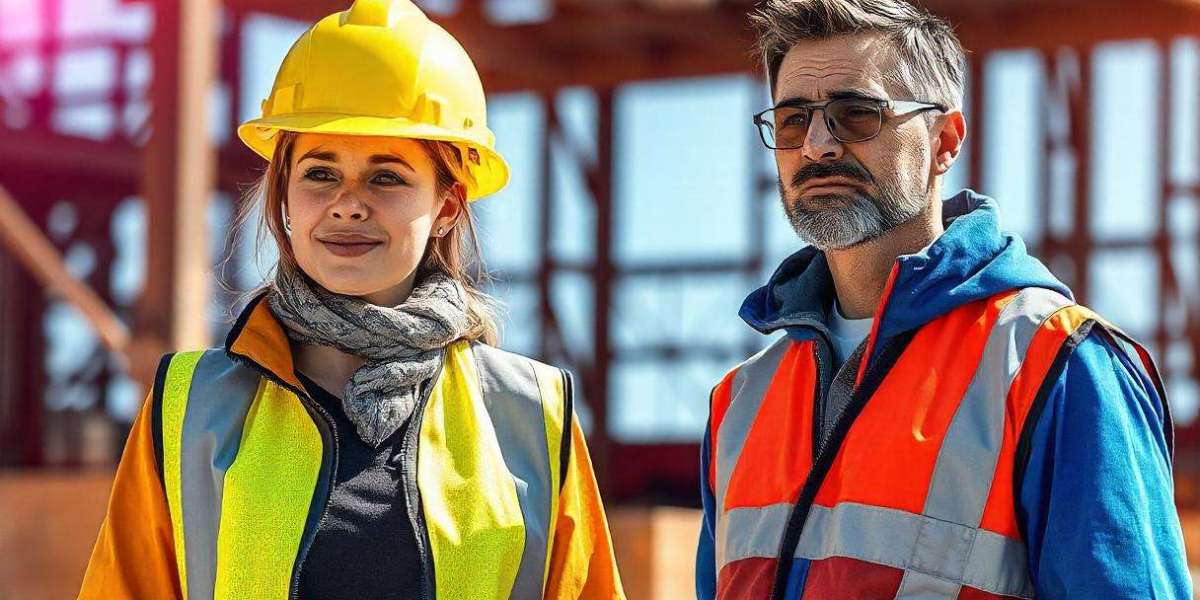Ensuring a safe and efficient workplace goes beyond simply following legal regulations. Evaluating workplace environment and facilities is a crucial step for organizations that want to prevent accidents, promote employee well-being, and improve overall productivity. The physical and organizational aspects of a workplace can significantly influence the safety and performance of workers, yet many businesses overlook the subtle hazards that can develop over time.
Think about a typical office or factory: from poor lighting and cluttered walkways to outdated machinery, every element can pose risks if not regularly inspected. When workers feel unsafe, it’s not just a matter of compliance—it affects morale, efficiency, and even staff retention. Evaluating your workplace environment and facilities isn’t just about ticking boxes; it’s about creating a culture of safety that permeates every level of the organization.
Understanding the Importance of Workplace Assessment
Workplace hazards can be obvious or hidden. While some dangers like exposed wiring or slippery floors are visible, others, such as poor ventilation, ergonomic stress, or overcrowding, can go unnoticed until they lead to injuries or health issues. Conducting a thorough evaluation of your environment ensures that risks are identified before they escalate into serious problems.
Investing in safety training and awareness programs is one step, but pairing that with an actual review of facilities makes the effort tangible. For example, organizations that participate in professional IOSH training programs or certifications often report significant improvements in their hazard management. However, one challenge many professionals face is understanding the costs associated with these programs. This is where IOSH Course fees in Pakistan come into play. By knowing the fees upfront, organizations and individuals can plan their training budgets more effectively and ensure that they are not compromising safety due to cost concerns.
Common Hazards in Workplace Environment and Facilities
When evaluating a workplace, it’s important to look at both physical and procedural hazards. Physical hazards often include slips, trips, and falls, faulty machinery, poor lighting, or even extreme temperatures. Procedural hazards may be linked to ineffective communication, inadequate emergency plans, or poor maintenance schedules.
A practical anecdote illustrates this well: in one manufacturing unit, the team noticed a series of near-miss incidents involving forklifts. Upon evaluation, they discovered the root causes were narrow pathways and poor lighting, rather than operator negligence. This shows that sometimes the environment itself is the hidden culprit.
Additionally, evaluating ergonomic hazards is vital, particularly in office settings. Chairs that do not support proper posture, desks at incorrect heights, and repetitive tasks without breaks can lead to chronic issues like back pain or carpal tunnel syndrome.
Step 1: Conducting a Visual Inspection
One of the first steps in evaluating your workplace environment is a visual inspection. This involves walking through all areas of the facility and noting any obvious risks. Focus on the following:
Flooring and walkways: Check for uneven surfaces, loose mats, or slippery areas.
Lighting: Ensure all areas, especially workstations and staircases, are well-lit.
Fire safety equipment: Verify the location and condition of extinguishers, alarms, and emergency exits.
Machinery and equipment: Look for wear and tear, missing guards, or improper use.
During a visual inspection, involve employees at all levels. Often, those working in specific areas notice hazards that managers might overlook. By creating an open dialogue, you encourage a proactive approach to safety.
Step 2: Reviewing Health and Safety Policies
After identifying physical hazards, it’s essential to evaluate safety procedures and policies. Are there documented procedures for emergencies? Is there a clear reporting structure for accidents? Policies are only effective if employees understand and follow them.
Consider using checklists to systematically review procedures. For instance, a checklist for fire safety might include:
Evacuation plan visibility
Regular fire drills
Accessibility of alarms and extinguishers
Employee familiarity with emergency contacts
Step 3: Employee Feedback and Hazard Reporting
One of the most overlooked steps in workplace evaluation is gathering employee feedback. Workers often experience hazards firsthand and can provide insight that inspections alone may miss. Conduct anonymous surveys, suggestion boxes, or small focus group discussions to collect opinions.
For example, in a logistics company, drivers reported frequent congestion near loading docks, which was missed during routine inspections. After implementing changes based on their feedback, accident rates dropped significantly. This demonstrates the value of listening to employees when evaluating your facilities.
Step 4: Risk Assessment and Prioritization
Once hazards are identified, the next step is to assess and prioritize risks. Not all hazards carry the same level of danger, so it’s important to determine which issues need immediate attention and which can be scheduled for later.
A simple matrix can help:
High likelihood / high impact: Address immediately
High likelihood / low impact: Schedule corrective measures
Low likelihood / high impact: Monitor closely
Low likelihood / low impact: Document and review periodically
Prioritization ensures resources are used efficiently and that the most critical hazards are addressed first.
Step 5: Implementing Control Measures
Once risks are assessed, the next phase is implementing control measures. These can range from engineering controls (like machine guards or ventilation improvements) to administrative changes (such as revised work schedules or training programs).
For instance, in a factory setting, poorly maintained equipment can be replaced or serviced regularly. In an office, introducing adjustable chairs and monitor stands can significantly reduce ergonomic hazards. Remember, the effectiveness of these controls should be monitored over time and adjusted as needed.
Step 6: Documentation and Record-Keeping
Maintaining accurate records is essential for both compliance and continuous improvement. Document every inspection, hazard identification, corrective action, and employee feedback. These records not only serve as proof of compliance but also help track patterns and improvements over time.
Moreover, clear documentation makes training new staff easier, as they can understand past hazards and the measures taken to prevent them.
Step 7: Regular Monitoring and Follow-Up
A one-time evaluation is never enough. Regular monitoring and follow-up ensure that controls remain effective and new hazards are identified promptly. Set a schedule for recurring inspections, whether weekly, monthly, or quarterly, depending on the nature of your workplace.
Monitoring can be simple, like checking for wear and tear, or complex, like analyzing injury trends. The key is consistency. When employees see that safety is continuously prioritized, it reinforces a culture of responsibility.
Step 8: Leveraging Technology for Safety
Modern workplaces can benefit immensely from technology in hazard evaluation. Sensors, wearable devices, and software tools can help track risks more accurately. For example, automated systems can monitor air quality, noise levels, or machinery performance, alerting staff before issues become severe.
Integrating technology with traditional inspection methods provides a more comprehensive understanding of workplace safety. This combination of human insight and technological support is proving to be one of the best practices for modern facility evaluation.
Step 9: Training and Continuous Education
Safety isn’t static. Hazards evolve with processes, equipment, and workforce changes. This makes ongoing training and education critical. Programs like IOSH training courses equip employees with the knowledge to identify and respond to risks proactively.
By integrating these courses into your workplace safety plan, employees gain both theoretical and practical understanding of hazards. And, by being aware of IOSH Course fees in Pakistan, organizations can make informed decisions about training budgets without compromising safety standards.
Step 10: Creating a Safety-First Culture
Finally, all evaluations and measures are most effective when embedded in a safety-first culture. Encourage open communication about hazards, reward proactive behavior, and make safety a shared responsibility rather than just management’s duty.
A personal anecdote illustrates this well: a small manufacturing unit began weekly safety briefings where employees shared near-miss incidents. Initially, attendance was low, but as stories of minor injuries were shared and addressed, more employees participated. Over time, the company saw a noticeable drop in accidents, proving that culture and engagement are as important as policies and inspections.
Read More About Safety Training Costs
Understanding training costs is vital for organizations aiming to improve workplace safety. Professionals and organizations should look into IOSH Fee in Pakistan and related training expenses to plan effectively. These fees vary depending on the level of training and certification, but investing in professional courses pays off by significantly reducing workplace hazards and boosting overall efficiency.
Conclusion
Evaluating workplace environment and facilities is not a one-time task but a continuous process. By following the steps outlined—visual inspections, policy reviews, employee feedback, risk assessment, control measures, documentation, monitoring, technological integration, and ongoing training—organizations can create safer, more productive workplaces.








